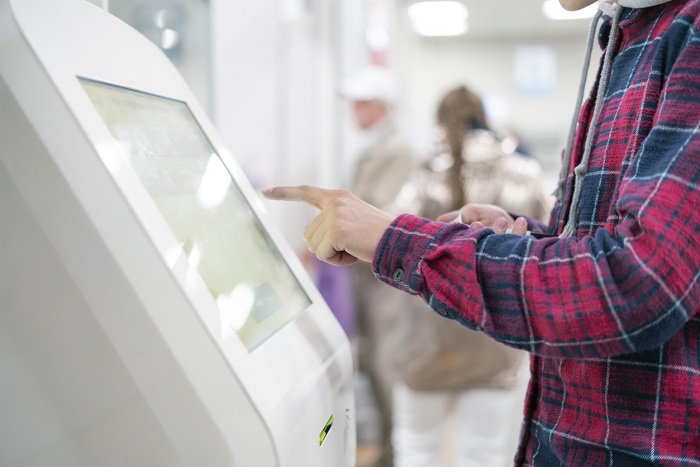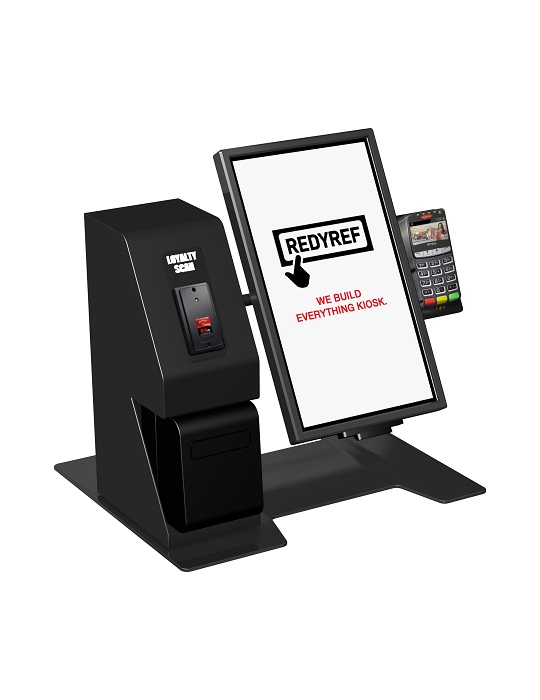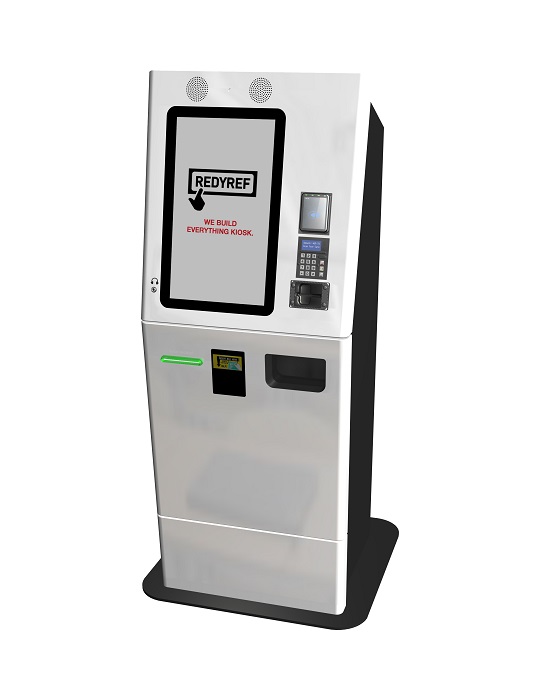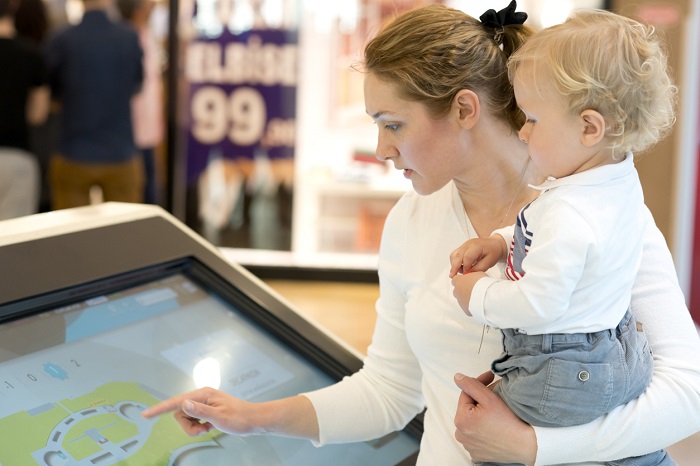Digital kiosks have emerged as powerful tools in today's technology-driven world, revolutionizing the way businesses engage with customers and enhance user experiences. These interactive self-service terminals combine advanced hardware and intuitive software to offer a wide range of functionalities, from self-checkout and information dissemination to interactive product browsing and wayfinding. With their sleek designs and user-friendly interfaces, digital kiosks provide a seamless and efficient means of interaction, making them a valuable asset for various industries, including retail, hospitality, healthcare, transportation, and beyond. In this guide, we will delve into the world of digital kiosks, exploring their features, benefits, and applications, and examining how they are reshaping customer engagement and transforming business operations.
What are digital kiosks used for?
Kiosks serve as effective tools for branding and self-promotion. Positioned visibly, they act as intermediaries between businesses and customers, providing a platform for information dissemination and service delivery. This streamlines interactions for both parties, eliminating the need for a physical presence at a specific location. Additionally, kiosks offer a wide range of services, including payment options, check-in services, branding and promotion, and product ordering. Payments are facilitated through secure lines, with NFC and other self-payment options ensuring privacy and efficiency. Product ordering is also simplified through intuitive digital menus, suitable for vending, dispensing, and various commercial applications. With prominently displayed kiosks, check-ins and self-service tasks become convenient, granting customers greater control over their schedules. Moreover, the public visibility of kiosks ensures prominent brand exposure.

Where do people interact with digital kiosks?
Digital kiosks are strategically positioned in high-traffic public areas, including malls, airports, and grocery stores, to maximize brand exposure in spaces with large amounts of foot traffic. Moreover, kiosks play a vital role in offering self-service options, serving as versatile intermediaries for a wide range of services and goods. In the realm of food services, fast food chains and quick-service restaurants greatly benefit from kiosks, which provide numerous self-payment options, enabling more efficient and effective operations. Kiosks also facilitate ticket printing for movies, as well as banking tasks such as generating statements and making deposits, alleviating the workload of surrounding staff. In mall and business office settings, they serve as wayfinding stations, simplifying navigation for individuals within the premises. Additionally, kiosks can be equipped with photo printing capabilities, rendering them highly practical in government offices like the DMV.
What are the primary types of digital kiosks?
Kiosks can be categorized into two main types: outdoor and indoor kiosks. Outdoor kiosks are designed to withstand constant use and exposure to the elements, making them larger and more robust. On the other hand, indoor kiosks can vary in size to cater to user convenience and are protected from outdoor wear and tear.
Beyond this classification, kiosks can be further distinguished into three common types: freestanding, wall-mounted, and tablet kiosks. Freestanding kiosks are commonly seen in outdoor retail spaces like grocery stores and malls. As the name suggests, they can stand on their own without the need for mounting. These kiosks are versatile and handle a wide range of tasks.
Wall-mounted kiosks, as implied by the name, are securely mounted on walls for easy access. These kiosks are typically found in banks, movie theaters, and various public locations, offering self-pay options and other functionalities.
Lastly, tablet kiosks are relatively smaller compared to the other types. They are commonly used in large office environments, serving as intermediaries for self-check-in procedures. Additionally, tablet kiosks can provide additional features such as QSR (quick-service restaurant) ordering or photo printing.
These various types of kiosks cater to different needs and settings, offering flexibility and convenience to both businesses and users.

Typical Digital Kiosk and Display Sizes
Kiosk display sizes can vary depending on the specific requirements and intended use. The range of display sizes available for kiosks typically includes:
- Small Displays: These are compact displays usually ranging from 7 to 15 inches in size. They are commonly seen in tablet kiosks or handheld devices where portability and limited space are key considerations. Small displays are suitable for applications like self-checkout, wayfinding, or interactive information display.
- Medium Displays: Medium-sized displays typically range from 15 to 32 inches. They offer a larger viewing area and are commonly found in freestanding or wall-mounted kiosks. These displays are well-suited for various interactive purposes, such as product browsing, self-service transactions, digital signage, or informational presentations.
- Large Displays: Larger displays, often exceeding 32 inches, provide an expansive and immersive visual experience. These displays are commonly utilized in larger kiosks or digital signage installations in high-traffic areas like airports, shopping malls, or event venues. Large displays are ideal for showcasing dynamic content, advertising, interactive maps, or multimedia presentations.
It's important to note that these size ranges are approximate and can vary depending on specific manufacturer offerings and customizations. The selection of a particular display size for a kiosk depends on factors such as the intended purpose, visibility requirements, available space, and user interaction needs.

What are some common features of digital kiosks?
Digital kiosks come equipped with a range of features to enhance their functionality and user experience. Some common features of digital kiosks include:
- Touchscreen Interface: Most digital kiosks incorporate a user-friendly touchscreen interface that allows users to interact with the kiosk easily. Touchscreens enable intuitive navigation, input, and selection of options, enhancing user engagement.
- Multimedia Capabilities: Digital kiosks often support multimedia content, including high-resolution images, videos, and audio. This enables the display of dynamic and engaging media, making the kiosk more visually appealing and informative.
- Internet Connectivity: Many digital kiosks are equipped with internet connectivity, enabling real-time data updates, online transactions, and interactive web-based applications. This connectivity allows users to access up-to-date information, make online purchases, or interact with online services directly from the kiosk.
- Payment Integration: Payment capabilities are a common feature in digital kiosks, especially in retail and self-service applications. Kiosks may support various payment methods, including credit/debit card transactions, contactless payments (NFC), or mobile payment options, ensuring convenient and secure transactions.
- Barcode/QR Code Scanners: Kiosks that handle product dispensing or ticketing often include barcode or QR code scanners. These scanners enable users to easily scan codes for product identification, ticket validation, or access to digital content.
- Printers and Receipt Dispensers: Some digital kiosks are equipped with printers or receipt dispensers to provide physical copies of tickets, receipts, coupons, or other transaction-related documents. This feature is particularly useful in applications such as ticketing, retail purchases, or customer service interactions.
- Wayfinding and Mapping: Digital kiosks in large venues like airports, shopping centers, or campuses often offer wayfinding and mapping functionalities. They provide interactive maps, directions, and location information, helping users navigate complex environments easily.
- Accessibility Features: Accessibility features are essential to ensure inclusivity. Digital kiosks may incorporate features such as adjustable height, wheelchair accessibility, text-to-speech functionality, and other accessibility options to accommodate users with diverse needs.
These are just some of the common features found in digital kiosks. The specific features can vary depending on the intended application, industry, and customization options provided by kiosk manufacturers.

Pros & Cons of Digital Kiosks:
Digital kiosks offer numerous advantages, but they also come with certain limitations. Let's explore the pros and cons of digital kiosks:
Pros of Digital Kiosks:
- Increased Efficiency: Digital kiosks streamline processes and reduce wait times by providing self-service options for tasks such as check-ins, ticketing, ordering, and information retrieval. This leads to improved operational efficiency and customer satisfaction.
- Enhanced Customer Experience: Interactive touchscreen interfaces, multimedia capabilities, and intuitive navigation make digital kiosks engaging and user-friendly. They provide users with convenient access to information, services, and transactions, enhancing the overall customer experience.
- Cost Savings: Digital kiosks can reduce staffing needs and operational costs by automating tasks that would otherwise require human assistance. Self-service options minimize the need for manual intervention, enabling businesses to allocate resources more efficiently.
- Upselling and Cross-selling Opportunities: Digital kiosks can be programmed to display targeted promotions, recommendations, or additional product options based on user preferences or purchase history. This presents opportunities for upselling and cross-selling, boosting sales and revenue.
- Real-time Updates and Analytics: Internet connectivity allows digital kiosks to receive real-time updates, ensuring accurate information display and availability. Additionally, kiosks can gather user data and generate analytics, providing valuable insights for business optimization and decision-making.
Cons of Digital Kiosks:
- Initial Investment: Implementing digital kiosks requires an upfront investment in hardware, software, installation, and maintenance. The cost can be significant, especially for larger deployments or specialized functionalities.
- Technical Challenges: Digital kiosks rely on technology, and technical issues such as software glitches, connectivity problems, or hardware malfunctions can occur. Prompt technical support and maintenance are necessary to address these challenges effectively.
- Learning Curve for Users: While digital kiosks are designed to be user-friendly, some users may still require time to adapt to the touchscreen interfaces and navigation. Adequate instructions and intuitive design are crucial to mitigate any learning curve.
- Security and Privacy Concerns: Digital kiosks that handle sensitive data or payment transactions must ensure robust security measures to protect user information. Data breaches, hacking, or unauthorized access can pose risks to user privacy and trust.
- Limited Personal Interaction: The self-service nature of digital kiosks reduces face-to-face interactions with staff. While this can be efficient for some tasks, it may hinder personalized customer service or instances where human assistance is necessary.
It's important for businesses to weigh these pros and cons based on their specific needs and objectives when considering the implementation of digital kiosks. Proper planning, maintenance, and user support can help maximize the benefits while addressing any potential challenges.
Common Questions About Kiosks:
What is a self-order kiosk?
A self-order kiosk is a kiosk that you can simply walk up to and place an order without any assistance. These usually are digital, with either a digital or non-digital keypad, allowing the user to order on their own. Since these are generally commercial, almost all self-order kiosks are equipped with NFC and secure pay functions to protect their transactions. Additional equipment can be installed such as a ADA navigation devices, bill and coin acceptors/dispensers and receipt printers.
What is a touchscreen kiosk?
A touchscreen kiosk is a type of interactive self-service terminal that incorporates a touchscreen display as its primary user interface. It allows users to interact directly with the screen by touching or tapping specific areas to input commands, select options, or navigate through the kiosk's functionalities.
What is "kiosk mode"?
Kiosk mode refers to a software setting or operating system configuration that restricts the functionality of a device or application to a specific purpose or limited set of functions. When a device is in kiosk mode, it typically runs only a single application or a select few applications, preventing users from accessing other features, applications, or system settings.
How much do digital kiosks cost?
The cost of digital kiosks can vary significantly depending on various factors such as the type of kiosk, size, features, customization, and the supplier or manufacturer. Basic static kiosks may cost less than $1000, whereas a complex kiosk with a very large, high-definition interactive touchscreen display may cost upwards of $40,000 depending on the software and integrations included.

Brands that use digital kiosks successfully
Many brands across various industries have successfully implemented digital kiosks as part of their business strategies. Here are several notable examples:
- McDonald's: The fast-food giant has implemented self-ordering kiosks in many of its locations worldwide. These kiosks allow customers to customize their orders, browse menu options, and make payments conveniently.
- Nike: Nike has incorporated interactive digital kiosks in its stores to enhance the customer experience. These kiosks provide product information, help with sizing and fitting, and even offer customization options for certain products.
- Delta Air Lines: Delta Air Lines has deployed self-service check-in kiosks at airports to streamline the check-in process for travelers. Passengers can check-in, print boarding passes, and select seats using these kiosks, reducing wait times and improving efficiency.
- Home Depot: The home improvement retailer utilizes digital kiosks in its stores to assist customers with product selection and provide information about various home improvement projects. These kiosks offer instructional videos, product recommendations, and inventory availability.
Digital kiosks present a versatile platform that delivers brand value and enhances user accessibility and convenience. With their growing popularity, these kiosks offer a compelling hands-free solution for businesses, empowering users with customizable interactions on their own terms. Interested in learning more? Contact REDYREF today for more information!





